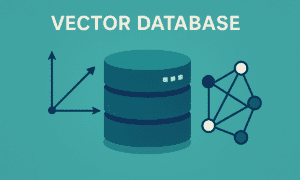Investing isn’t just for adults or financial experts it’s a skill that young people can start learning early to build a strong financial future. With the rise of youth investment education programs, the next generation is gaining the knowledge and tools to make informed financial decisions, grow their wealth, and secure their futures. In this article, we’ll explore the importance of these programs, how they work, and how young people can take advantage of them.
Why Investment Education Matters for Youth
Many young people are not taught about money management and investing in school, leaving them unprepared for real-world financial challenges. Without proper knowledge, they may struggle with savings, fall into debt, or miss out on opportunities to grow their wealth over time. Investment education helps bridge this gap by teaching young individuals how money works, the importance of saving early, and how to make smart financial decisions.
Here are some key benefits of youth investment education:
Financial Independence: Learning to invest early can help young people build wealth and avoid financial struggles in adulthood.
Better Decision-Making : Understanding how investments work reduces the likelihood of falling for scams or making poor financial choices.
Wealth Building : Starting early allows youth to take advantage of compound interest, leading to long-term financial growth.
Entrepreneurial Mindset : Investing teaches risk assessment, planning, and strategic thinking skills that are valuable for future entrepreneurs.
Key Components of Youth Investment Education Programs
Youth investment education programs are designed to simplify complex financial concepts and make investing accessible to young learners. These programs focus on:
Basic Financial Literacy
Before diving into investments, it’s essential to understand the basics of money management. Topics covered include:
- How to create and stick to a budget
- The importance of saving money
- Understanding income, expenses, and debt
Investment Fundamentals
Once the basics of financial literacy are understood, young people can start learning about:
- Different types of investments (stocks, bonds, mutual funds, real estate, etc.)
- How the stock market works
- The risks and rewards of investing
- The concept of compound interest and long-term investing
Practical Investing Experience
Many programs offer hands-on investment opportunities, such as:
Stock market simulations: Virtual platforms where young people can practice investing without real money.
Junior investment clubs: Groups where members learn together and discuss investment strategies.
Teen-friendly investment apps: Some platforms allow young investors to start with small amounts under parental guidance.
Risk Management and Ethical Investing
Understanding risk is crucial when it comes to investing. Programs teach:
- How to assess investment risks and avoid high-risk schemes
- The importance of diversification to reduce potential losses
- Ethical investing- choosing investments that align with personal values and sustainability goals
Popular Youth Investment Programs and Platforms
Many organizations and financial institutions have launched programs tailored to young learners. Some popular ones include:
Junior Achievement Finance Park : A program that teaches financial literacy and investing to high school students.
The Stock Market Game: A simulation-based learning platform for students to practice investing in real-time.
Acorns Early: A platform that allows parents to set up investment accounts for their children.
Fidelity Youth Account: A brokerage account designed specifically for teens.
These programs help bridge the knowledge gap and make investment learning more interactive and engaging for young people.
Steps for Young People to Start Investing
If you’re a young person interested in investing, here are some steps to get started:
Learn the Basics
Start with free online resources, books, or youth investment programs to understand how investing works.
Set Financial Goals
Decide why you want to invest whether it’s for college, a business, or long-term financial security.
Start Small
You don’t need a lot of money to start investing. Many platforms allow small investments, sometimes as low as $1.
Use Youth-Friendly Investment Apps
Apps like Acorns, Stash, or Fidelity Youth Account can help you start investing in a simple and guided way.
Practice with Simulations
Before using real money, practice with stock market games to build confidence and learn strategies.
Think Long-Term
Investing isn’t about getting rich quickly. It’s about steady growth over time. Be patient and focus on long-term gains.
Conclusion
Investment education for youth is a game-changer. With the right knowledge and tools, young people can take control of their financial futures and develop habits that lead to wealth and stability. Whether through school programs, online resources, or investment clubs, there are plenty of opportunities to learn and start investing early.
By preparing the next generation for investing, we’re not just helping individuals we’re creating a financially smart and responsible society. So, if you’re a young person, start learning today. And if you’re an educator or parent, encourage financial literacy and investment education it’s one of the best gifts you can give the next generation.



































